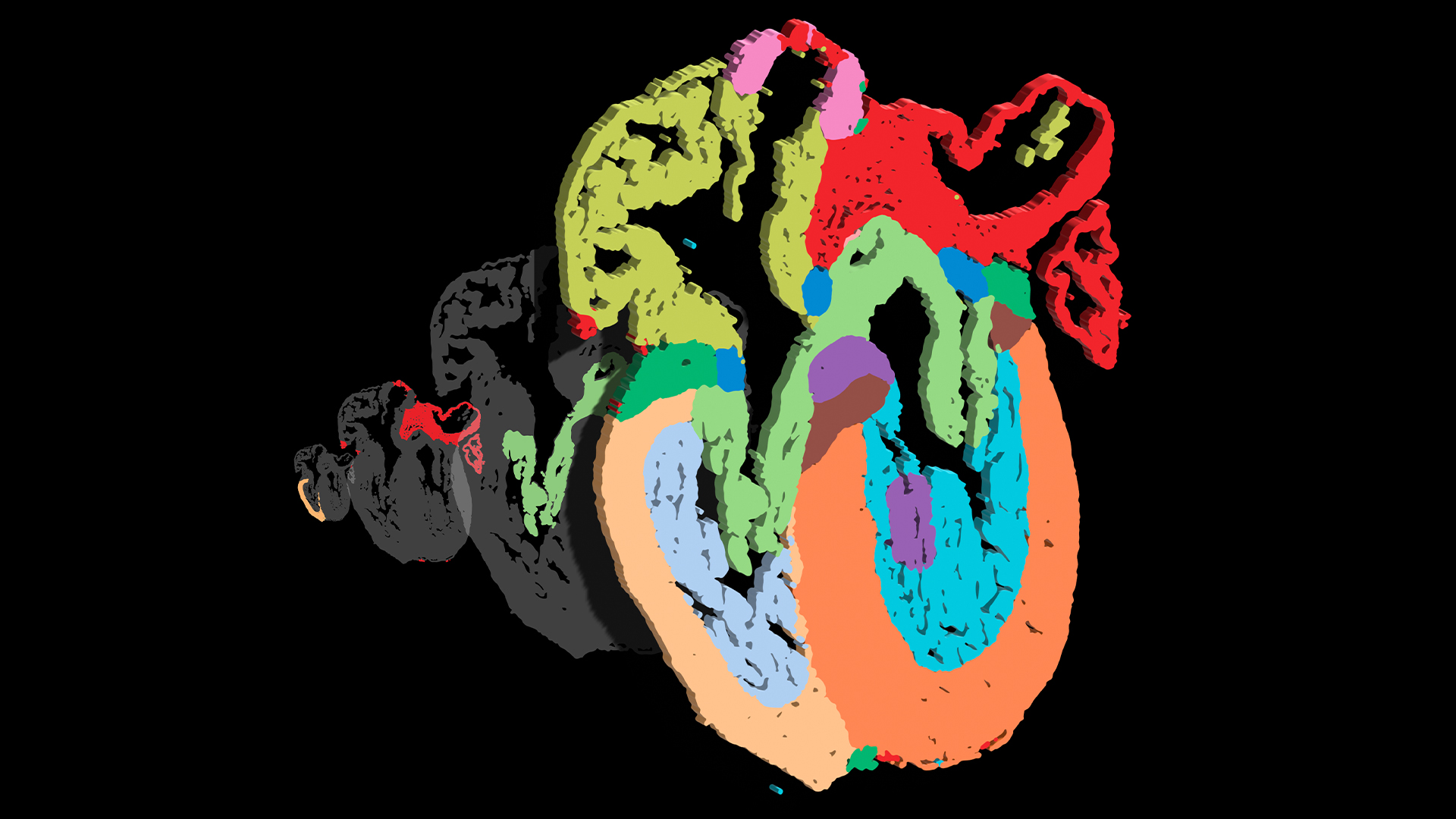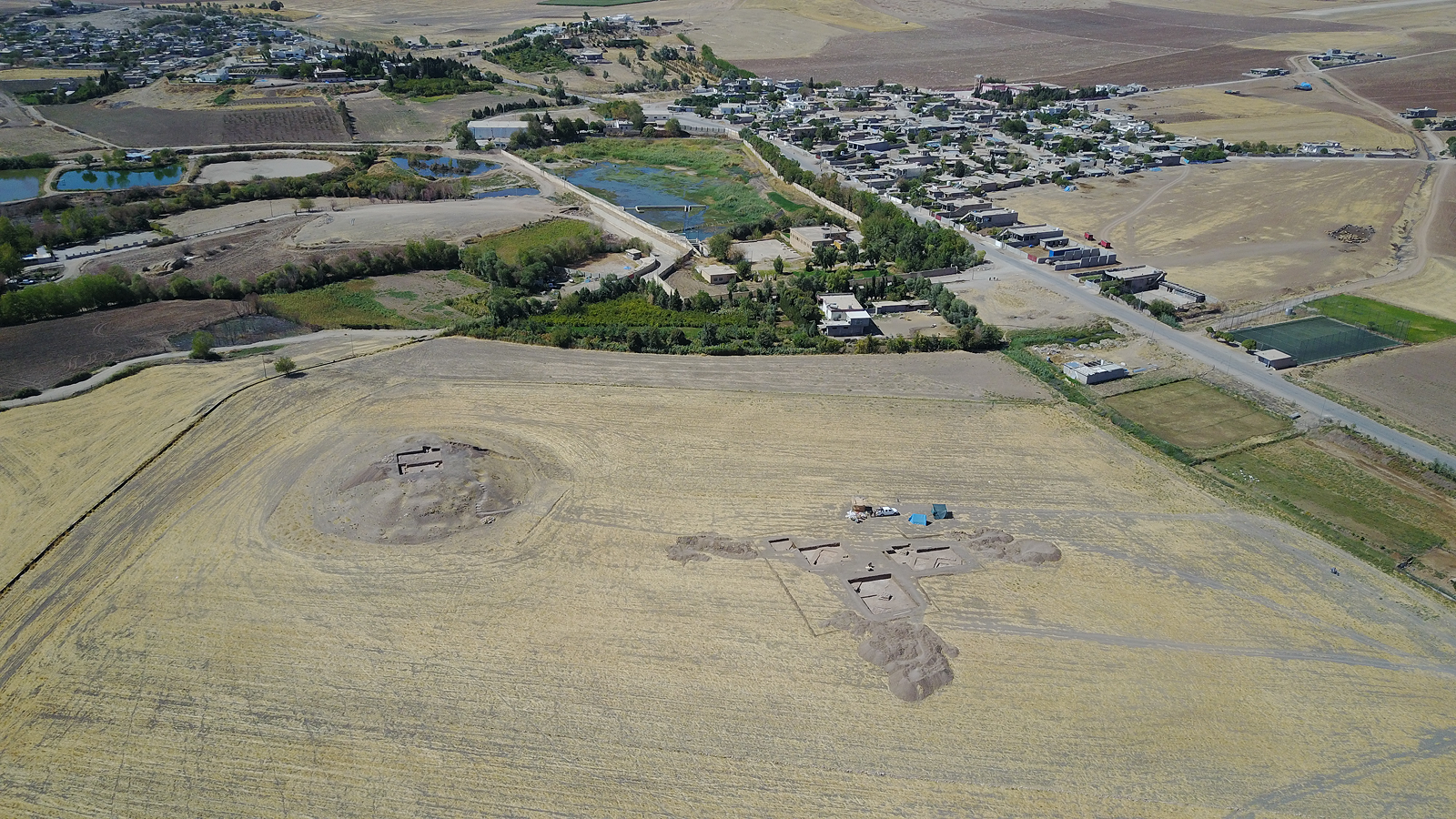Never-before-seen cells unveiled in detailed map of developing human heart
The most comprehensive cell "atlas" of the developing human heart to date was crafted using cutting-edge technology and includes never-before-seen cell types.

Scientists just published the most detailed map of the developing human heart to date.
The atlas includes 75 types of heart cells, including cell types in the heart's valves and the muscles that fuel its beats that have never been seen before. It shows how these and other cells organize to form the different internal structures of the heart in the womb. The research, which was released Wednesday (March 13) in the journal Nature, also reveals how the different cells interact during heart development.
"For the first time, we can view how the cardiac cells organize to form the different structures of the heart at high resolution, akin to zooming in on individual houses in Google Maps," Elie Farah, the study's first author and a postdoctoral scholar in the Neil Chi Research Laboratory at the University of California, San Diego (UCSD), told Live Science in an email.
To chart their map, Farah and his colleagues studied whole human hearts that had been donated to the UCSD Perinatal Biorepository, a bank of tissues used to study human pregnancy. The hearts in the study were donated between weeks 9 and 16 of fetal development. At this stage, the heart has already progressed from being a simple tube to developing four distinct chambers, but it is still much smaller than an adult heart.
Related: Scientists unveil new 'heart-on-a-chip'
One technique the researchers used was single-cell RNA sequencing, which enabled them to look at a type of genetic material called RNA inside each heart cell. RNA carries blueprints stored in genes over to a cell's protein-construction factories, so analyzing RNA can help scientists identify different types of cells.
The other technique used in this study is called "multiplexed error-robust fluorescence in situ hybridization," or MERFISH for short. It was introduced in 2019 by Quan Zhu, associate director of UCSD's Center for Epigenomics and a co-senior author of the new paper. This method allows researchers to detect and quantify RNA transcripts — the copied blueprints — of hundreds of genes in each cell while recording the anatomical location of the cell in an organ.
Get the world’s most fascinating discoveries delivered straight to your inbox.
Zhu teamed up with Chi's laboratory to use this cutting-edge technology to study how human hearts develop, becoming "the first research team to apply MERFISH technology to study the human developing heart with spatially resolved single cell resolution," Zhu told Live Science in an email. In other words, MERFISH enabled the team's map to capture the characteristics and coordinates of individual cells within the fetal heart.
"We not only are able to identify unexpected cell types special to the developing heart that are not in the adult heart, but also understand deeper why the left of our hearts are different from the right at a very early stage," Zhu added. For example, more layers of heart muscle cells were observed in the lower-left chamber, or left ventricle, than the right ventricle, indicating that the left ventricle develops earlier than the right.
In addition to analyzing whole hearts, the team conducted genetic mouse studies and laboratory tests with human stem cells. These demonstrated how different types of cells communicate with each other to drive the development of the heart's internal structures.
For example, they observed interactions between muscle cells in the heart's ventricles; fibroblasts, or cells that contribute to the formation of connective tissue; and endothelial cells, which line blood vessels. These interactions may play a role in the formation of the heart's ventricular walls.
"This is a landmark paper," Norbert Hübner, professor and group leader at Max Delbrück Center in Germany who was not involved in the study, told Live Science in an email. The way the researchers analyzed RNA "serves as a model for understanding organ function at the single-cell level and identifying clinically relevant cell states and niches in the developing heart," he said.
The comprehensive atlas of the developing heart has some very important applications.
"The data are crucial for future studies of congenital heart disease [heart defects people are born with] and to inform regenerative medicine approaches aiming to replace lost or dysfunctional myocardium [heart muscle]," Dr. Michela Noseda, a senior lecturer and group leader at Imperial College London who was not involved in the study, told Live Science in an email.
Although this atlas is unprecedented in its detail, even better versions are in the pipeline.
The next step is to create a full 3D model of the developing human heart, Farah said. Then, the researchers want to track the heart's development over time to create "a 4D atlas of the developing human heart" — basically a kind of "movie" of heart development that would give scientists a better understanding of this critical process.
Ever wonder why some people build muscle more easily than others or why freckles come out in the sun? Send us your questions about how the human body works to community@livescience.com with the subject line "Health Desk Q," and you may see your question answered on the website!

Clarissa Brincat is a freelance writer specializing in health and medical research. After completing an MSc in chemistry, she realized she would rather write about science than do it. She learned how to edit scientific papers in a stint as a chemistry copyeditor, before moving on to a medical writer role at a healthcare company. Writing for doctors and experts has its rewards, but Clarissa wanted to communicate with a wider audience, which naturally led her to freelance health and science writing. Her work has also appeared in Medscape, HealthCentral and Medical News Today.



